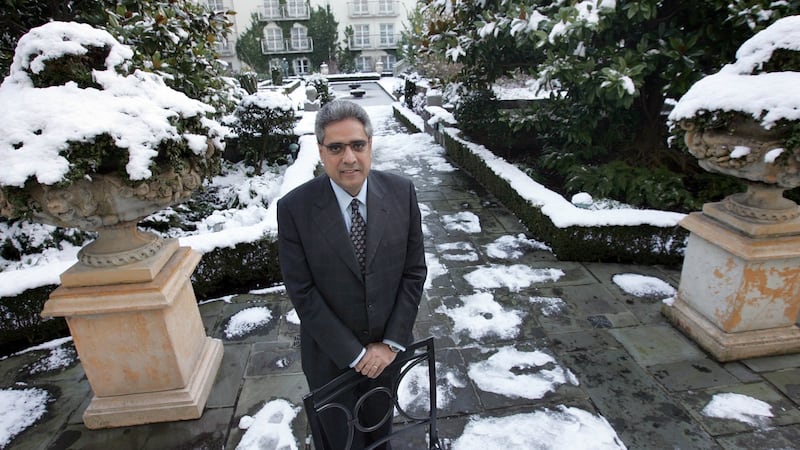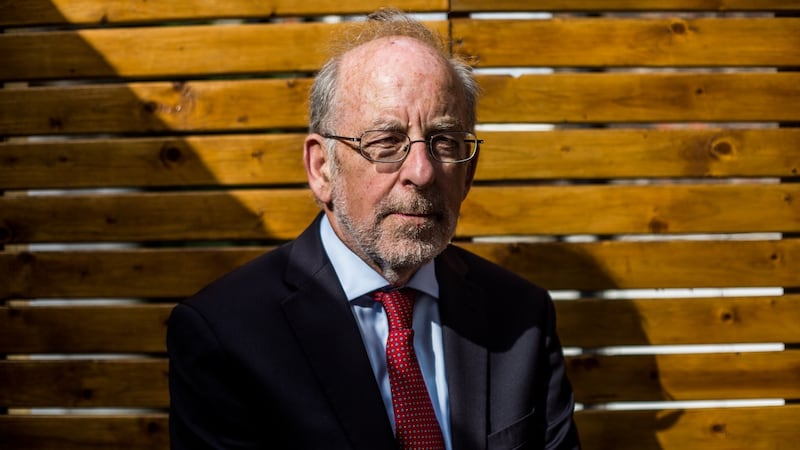This time it’s different.
Ten years ago today, Ireland went into the arms of the International Monetary Fund (IMF). Following weeks of speculation, rumours and semi-denial, the government accepted the inevitable. Economic sovereignty was lost.
It was the most extraordinary and the most depressing moment in Irish economic history. A decade on, some of those most closely involved believe that key lessons have been learned as we navigate new extraordinary times.
The nature and the handling of the Covid-19 crisis gives a chance of a quicker escape than the long years after the crisis hit in 2008, even if some of the scars from the last time still linger.
Back then, the scale and nature of the financial collapse meant there was no quick exit route. As one senior government figure of the time says: “ There was no vaccine for Anglo” which cost the State not far off €30 billion.
Nor was there a quick cure for the sudden emergence of a massive gap between spending and revenue at a time when the State became locked out of borrowing markets.
This time around lenders are throwing money at us and at other countries. Governments, including Ireland, now have the scope to continue spending to address the crisis, according to Ajai Chopra, who headed the IMF bailout team and who was the public face of the troika, which also included the European Commission and European Central Bank (ECB).
Low interest rates mean governments have room to do this, he says, without running big risks with their public finances. After the last crisis, a move to higher interest rates and tighter budgets came way too early.
“It is important that they learn the lesson from the last crisis, when there was a premature move to austerity – and that was wrong,” says Chopra.
Soaring borrowing costs and the likelihood of running out of cash pushed the Irish government into the 2010 bailout. The terms of the bailout, meanwhile, meant further cuts to spending and tax hikes, though the recovery afterwards – when it did take hold, says Chopra, “exceeded the most optimistic expectations”.
With no access to additional funds at the time, the Fianna Fáil-Green administration and then finance minister Brian Lenihan announced massive tax hikes and cuts in 2008-10 and the subsequent Fine Gael-Labour government was tied to troika orders.
“Ireland did the right thing, and then it got lucky,” says Chopra – the euro zone stabilised, international interest rates remained low and exporters benefited from the global emergence from crisis.
This time, the option to borrow money at rock bottom or in some cases negative interest rates has transformed the situation.
There are lessons from today in how the last crisis was handled, according to Patrick Honohan, who as Central Bank governor famously went on Morning Ireland to tell the nation the bailout was inevitable when government ministers were still obfuscating.
Honohan, who was at the European Central Bank in Frankfurt at the time, says he did not realise exactly what the mood was in Ireland. “As far as I was concerned it was a slam dunk and a communications failure and we were missing out by not communicating clearly.”
A generation of homeowners, many now in their 40s, were left behind in the last crisis, he says, stranded with massive mortgages and collapsing house prices. This time another younger generation is in the firing line, including many relatively low-paid people in the hospitality, entertainment and leisure sectors.
“We didn’t have the resources to deal with it the last time,” he says. Now the State is in a position to spend money to support those worst hit, though it has to be careful to do so in the right way.
Honohan says that during the previous crisis, governments did a good job of preventing income inequality from increasing – in other words ensuring that the gap between rich and poor did not widen sharply.
“But when overall income levels fall, this is not good enough”, as the better-offs can cope with the income fall while those on lower incomes will struggle. He praises the Government for the income and wage supports introduced this time around – though not the VAT moves, which he thinks were mistaken.
Honohan says a big job lies ahead in planning strategically for the exit from the pandemic with a need for the Government to set out a plan and “think long term” as the crisis phase of the current downturn passes.
Ireland’s economy is getting some support from the exporting multinational sector during the pandemic, according to Chopra, but he says it is right to focus policy on supporting the domestic economy and the unemployed.

“You have to protect people,” he says, noting that “what Ireland has going for it is its political and social cohesion”. He believes governments will have to keep on spending at high levels for a prolonged period, and that this is now sustainable, with European governments supported by ECB policy and by the decision to suspend the EU budget rules. “This should and must continue for some time.”
Chopra has now left the IMF and is working as a consultant. He argues that during the bailout the IMF had consistently pushed for better terms for Ireland and supported the "burning" of senior bondholders in Anglo Irish Bank, a move scuppered by strident ECB opposition.
This time around there has been much comment internationally on how the IMF and other agencies – and big EU governments – have done an about-turn from the mantra after 2008 of getting budgets balanced to calling for huge fiscal expansion to combat the pandemic. Nowhere is this more obvious than at the ECB.
Honohan says the European Central Bank mindset 10 years ago was to look askance at countries getting into difficulty, tut-tut and ask: "Why can't these people be more disciplined?" Europe was engaged in a "blame game" which started when Greece got into trouble.
Chopra has long been critical of the ECB roll in the bailout programmes and says that Europe and the European Central Bank’s quick response to the pandemic crisis stands in contrast to what happened last time.
“The ECB has acted very ambitiously this time,” he says, bringing down bond interest rates and opening the way for much more active budget policy to combat the downturn. “It is another sign that lessons have been learned.”
The rapid action of the European Central Bank in pumping money into the markets has made a vital difference to Ireland’s options – and those of other countries – this time around. The country was pushed into the bailout when borrowing costs rose to 7 and 8 per cent, effectively meaning it could not afford to borrow money. Market rates on Irish debt subsequently rose much higher, though Ireland was by then borrowing from the bailout fund.
Some observers in Dublin believe that help from the European Central Bank might even have avoided the need for the bailout. “The ECB could have and should have done a lot more,” according to one person involved in government at the time. Both Chopra and Honohan agree that the European Central Bank should have assisted Ireland much more, but both believe the bailout became inevitable and while – as Honohan put it, “a lot of damage was done on the way” – it did provide Ireland with vital funds, eventually allowing a return to the market and growth.
“We were right to go in, absolutely right,” says Honohan, while Chopra says the budget crisis and initial misdiagnosis of the banking problem as one of funding rather than liquidity meant that by 2010 Ireland had no other way out. What Chopra calls “the doom loop” had set in.
By the time Ireland left the bailout at the end of 2013, interests rates were heading firmly downwards and confidence was being restored. Since then Ireland’s recovery – and then the response to the latest crisis – has been transformed by ever-lower borrowing costs.
The average rate of interest on Ireland’s national debt has fallen from about 5 per cent when the last crisis hit to about 2 per cent. With the ECB due to announce more market support to keep rates down next week, low borrowing costs look to be here for quite some time.
While interest rates for the Irish State remain low, borrowing costs for mortgage holders and businesses are above the EU average. Chopra says that “the problem of non-performing loans remains” – the bad debts are still on the balance sheets of Irish banks from mortgages and other loans. “This is a problem which has not gone away” and is still “a legacy of the financial crisis”.
Ireland is unusual in having very long-term mortgage arrears with the latest data showing almost 5,000 loans in arrears for more than 10 years and a further 12,000 between five and 10 years.

Ireland still had to find a balance between consumer protection and dealing with bad loans via repossessions, loan restructuring and other routes, says Chopra. Letting bad loans linger on bank balance sheets “comes at a cost”, he says, with the price of non-performing loans being paid through less resilience in the banking system, higher capital requirements from regulators, and higher borrowing costs to consumers and businesses.
Honohan says it is a pity that a way has not been found to work through the bad loans dating back to the past crisis. Given the political sensitivities it is a problem which is likely to persist, he says, agreeing that it is one of the factors pushing up the cost of borrowing here. Honohan has also called for new thinking on the way to deal with corporate insolvencies emerging from the current crisis, learning the lessons from the slowness to deal with this in many cases on the last occasion.
This time around the economy has taken a bigger and more sudden hit. But without the fundamental underlying problems which surfaced last time – insolvent banks and a massive hold in the budget as taxes collapsed – the crisis should not linger as it did the last time. Policymakers have realised, says Honohan, that extraordinary policy action is needed. “These things are for the rainy day, and it’s raining.”
It is the opposite to what was done after the last crisis, even though the final chapters of this one have still to play out.



















